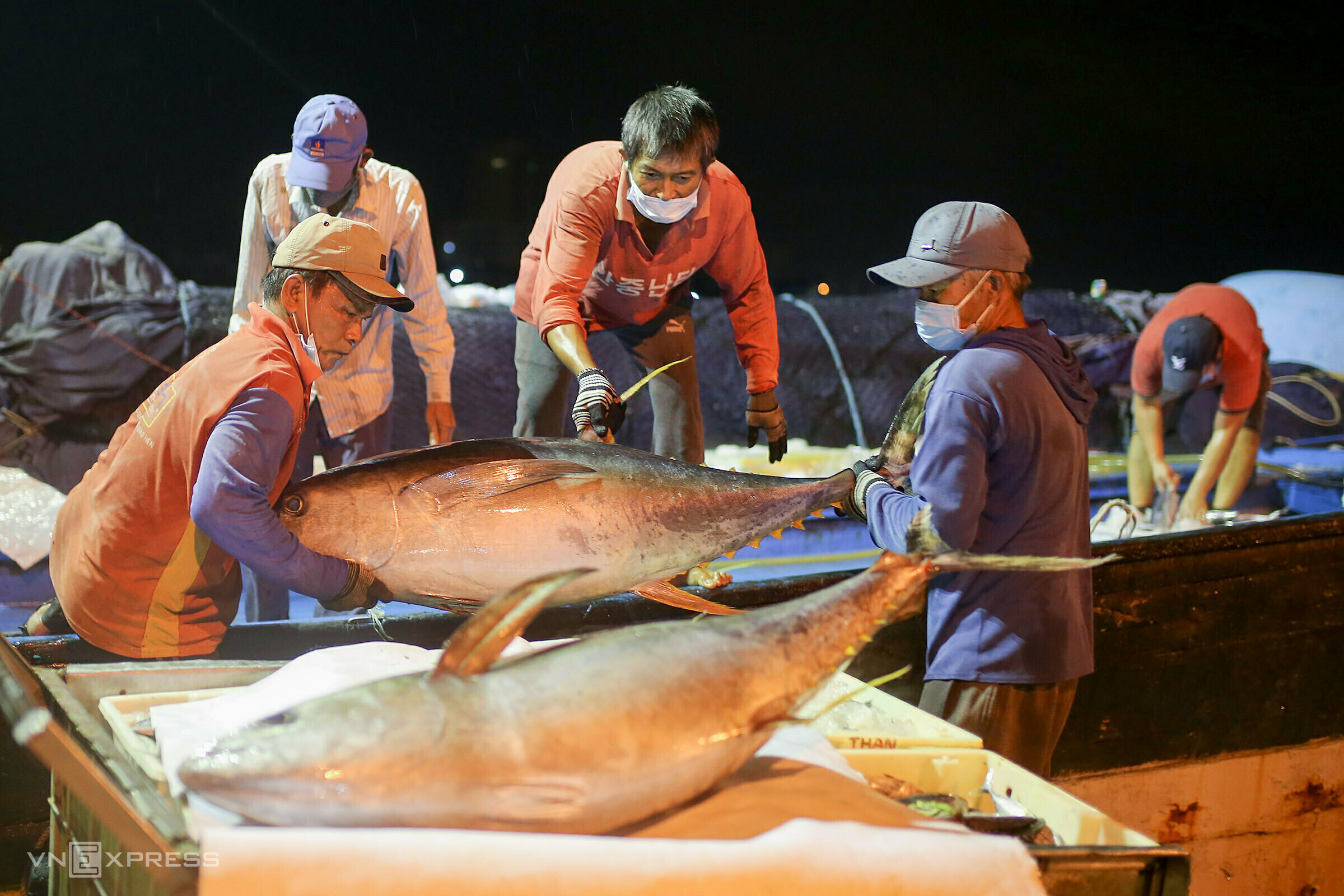Data recently released by the Vietnam Association of Seafood Exporters and Producers (VASEP) shows that in the first 8 months of the year, tuna exports to the US reached 223 million USD, a decrease of more than 13%, dragging down the entire industry.
According to VASEP, the main reason is unfavorable tariffs, which have caused businesses' orders to stagnate. Since August, the US has imposed anti-dumping and countervailing duties totaling 20% on Vietnamese tuna. Meanwhile, direct competitors enjoy significant advantages: Ecuador faces only a 15% tariff thanks to its free trade agreement with the US, while Indonesia and the Philippines enjoy a 19% rate under the Generalized System of Preferences (GSP). This tariff difference of 1-5 percentage points has made Vietnamese products significantly less competitive.
"Even a few percentage points difference in tariffs greatly affects purchasing power, let alone a difference of 5%. Many long-term customers have switched to importing from Ecuador," said a representative of a tuna exporting company in Khanh Hoa.
For many years, the US has been the largest market for Vietnamese tuna, accounting for about 35-40% of export revenue; in 2024 alone, it reached nearly 387 million USD.
 |
Tuna caught by Da Nang fishing boats. Photo: Van Dong |
While the US market has stagnated, the EU continues to be a growth driver. In August, exports to the bloc reached 17 million USD, a 6% increase compared to the same period last year. The Netherlands and Italy recorded increases of 40% and 43% respectively, while Germany also saw a 26% rise.
The Comprehensive and Progressive Agreement for Trans-Pacific Partnership (CPTPP) bloc also showed positive signs. Japan unexpectedly increased its imports of Vietnamese tuna by 88% in August, Canada continued its upward trend, while Mexico, although still increasing, has slowed. In addition, many emerging markets have also become bright spots: the Philippines (up 72.4%) and Thailand (up 248%).
In the first 8 months of the year, Vietnam's tuna exports reached nearly 633 million USD, down 2.3% year-on-year. Although August showed signs of recovery with a slight increase of 1.4% (over 91 million USD), the entire industry remains under significant pressure.
According to VASEP, the outlook for the end of the year may improve thanks to increased consumer demand, especially during the Christmas and New Year period. However, the industry still faces many challenges, including fluctuating raw material prices, high logistics costs, and competition from major producing countries. Recently, the US National Oceanic and Atmospheric Administration (NOAA) refused to recognize the equivalence of 12 Vietnamese fisheries, including tuna, under the Marine Mammal Protection Act (MMPA). Therefore, Vietnamese businesses need to proactively implement response measures and adjust their market strategies accordingly.
Thi Ha












